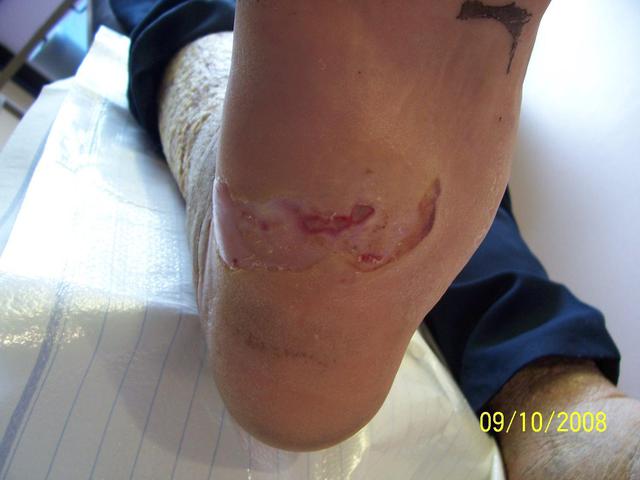Diabetic wounds commonly develop as a result of prolonged high blood sugar levels, which can compromise healing and increase the likelihood of infections. These wounds often occur on the feet but can develop elsewhere. Proper diabetic wound care is key to preventing complications, such as infections or potential amputations. Here are ways to care for diabetic wounds:
Daily Cleansing and Dressing
Daily cleansing and dressing of diabetic wounds is key to supporting healing and reducing the risk of infection. The wound should be washed gently with a saline solution or lukewarm water to remove debris and bacteria. Avoid harsh antiseptics, which might damage healthy tissue around the wound. Carefully pat the area dry with a clean, soft cloth, making sure no moisture remains, as this can facilitate bacterial growth. Proper cleansing sets the foundation for effective diabetic wound care and prepares the area for dressing.
After cleansing, apply an appropriate dressing to protect the wound and maintain a moist healing environment. Select a dressing that matches the wound’s severity and condition, such as foam, hydrogel, or non-adherent gauze. Change dressings according to your healthcare professional’s guidance or whenever they become soiled or wet. Always handle dressings with clean, gloved hands to prevent introducing contaminants.
Pressure Offloading
Reducing prolonged pressure on the affected area prevents further tissue damage and promotes optimal healing conditions. Techniques to achieve pressure offloading include specialized tools such as cushions or orthopedic insoles. Proper patient education is equally important for successful pressure offloading. Individuals should be informed about the need to avoid direct pressure on the wound and to adhere to prescribed positioning. For ambulatory patients, using crutches or wearing offloading footwear should redistribute weight away from the wound site.
Address Underlying Health Factors
Chronic conditions should be carefully managed to reduce their impact on wound progression. Vascular conditions require targeted interventions such as compression therapy or revascularization procedures to enhance blood flow to the affected area. These efforts directly support the natural healing process and mitigate further deterioration. Nutritional assessment and support also play a pivotal role in addressing underlying health factors. Adequate intake of essential nutrients is necessary for effective tissue repair and immune function.
Manage Blood Sugar Levels
Maintaining stable blood sugar levels is key to diabetic wound care and promoting wound healing. Elevated blood glucose may impair various aspects of the healing process, including inflammation control, collagen synthesis, and infection prevention. High blood sugar levels may also contribute to poor circulation, which inhibits the delivery of oxygen and nutrients essential for cell repair. To address these issues, healthcare providers may implement strategies such as patient education on glycemic control, medication adjustments, or structured diet plans tailored to individual needs.
Specialized Treatment Options
Diabetic wound care often requires specialized treatment options to promote healing.
- Medical Interventions: Certain wounds may require advanced treatment, such as debridement to remove dead tissue to improve healing.
- Footwear and Nail Care: Putting on supportive, well-fitted footwear can help reduce pressure on the wound. Proper nail care is key to lowering the risk of infections that might lead to wounds. Avoid trimming nails too short or cutting into the corners, which can potentially cause injuries.
- Routine Monitoring and Follow-Up: Frequent follow-ups with your healthcare provider allow for the monitoring of wound healing and the detection of early complications. Perform self-checks at home, paying close attention to any changes in the wound’s appearance or signs of infection.
Learn More About Diabetic Wound Care
Proper diabetic wound care involves cleaning, offloading pressure, managing health conditions, and seeking timely medical attention. Implementing these practical measures can promote healing and reduce complications. Stay engaged with your healthcare provider to customize a care plan tailored to your needs.





Leave a Reply